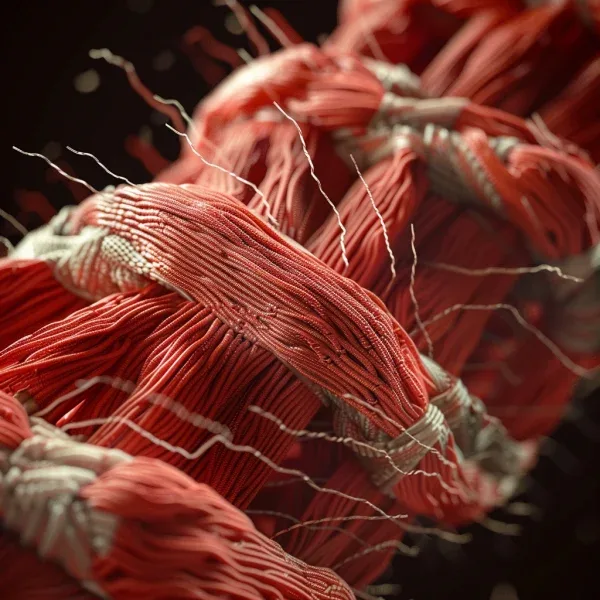by Nadia Sinclair

Any fitness enthusiast understands the importance of rest days. But have you ever wondered what transpires in your muscles during these recovery periods? Understanding how your body responds to workouts, handles delayed onset muscle soreness, and navigates minor injuries can help optimize your fitness results.
Easing into the Science of Muscle Soreness
When you engage in strength training, the muscle tissues are placed under stress, causing minute muscle fiber tears. The body then repairs these microtears, enhancing the muscle’s size and quality. As it heals, inflammation and muscle fiber degradation initially occur. Repairing cells then release pro-inflammatory molecules to begin cellular debris removal, and fibroblasts generate from adult muscle stem cells to repair fibers. Throughout this process, you will feel a symptom known as delayed onset muscle soreness (DOMS) – a clear sign that your body is healing from the previous workout session. DOMS is commonly accompanied by stiffness, swelling, and slight muscle strength decline. These symptoms relate to the inflammation stage of muscle healing, and it is essential to be cautious and caring through this period.
Maximizing Post-workout Recovery: What Can You Do?
While getting through the uncomfortable phase of DOMS, there are several techniques you can implement to facilitate your post-workout recovery. Successfully integrating these strategies into your routine increases the chances of enhanced performance in your subsequent training sessions. Here’s a compilation of expert-recommended strategies to bounce back effectively after an intense workout.
The 8 Key Practices for Enhancing Muscle Recovery
1. Replenish glycogen Levels
For your muscles to generate energy rapidly and prevent fatigue, you need to replenish your glycogen levels. Consuming around 4-5g of carbohydrate per kg bodyweight if you’re working out regularly, coupled with 1g of protein per kilogram of bodyweight (or 1.5kg if you’re frequently doing heavy lifting/endurance training), comes highly recommended. Additionally, magnesium citrate supplements can be beneficial during intense training periods.
2. Stay Hydrated
Hydration is not just about drinking more water; it’s more about preventing dehydration. Even a one percent dehydration can negatively affect performance by impairing muscle and brain efficiency. Plain water is usually sufficient, but for prolonged training sessions, sports drinks rich in carbs, salt, minerals like magnesium and potassium can be beneficial for faster recovery.
3. Prioritize Sleep
Your body may rest at night, but it actively works on preparing you for your next workout. The pituitary gland releases growth hormones that stimulate muscle repair and growth during sleep. Thus, getting enough sleep is critical in managing the stress hormone cortisol and gaining optimum benefits from your training session.
4. Understand Your Hormones
Reproductive hormones play a significant role in your ability to recover. Oestrogen aids in tissue repair and muscle growth, whereas progesterone supports muscle breakdown. Understanding these hormonal effects can provide insights into your body’s response to workouts.
5. Experiment with Cold-Water Immersion
Cold-water immersion is believed to speed up recovery by boosting the flow of blood deeper into the muscles to flush waste products. This lowers inflammation, but the balance must be found, as cooling may slow protein-building, which is essential for muscle recovery. Cold-water recovery strategies are most effective during periods of intense, consecutive training days.
6. Use A Massage Gun
Massage guns like the Homedics Pro Physio Massage Gun (£299) can expedite muscle recovery during rest days. This massage device’s interchangeable heads and different intensity levels offer personalized post-exercise recovery plans. A massage gun helps relax tight muscles, thereby enhancing the rest and recovery process.
7. Try an Infrared Sauna Blanket
The MiHigh Infrared Sauna Blanket (£399) is a beneficial recovery tool. It quickens heart rate and blood flow, helping flush out post-workout toxins while releasing feel-good hormones for an overall pleasurable experience.
8. Follow Optimal Loading Strategies After an Injury
If an injury occurs, an optimal loading strategy is advisable – starting with non-impact training, progressing through low-impact training to impact training, and finally returning to full exercise/sporting activities. However, each stage should be carefully planned to avoid further strain or injury.
By understanding how your muscles repair and grow after a workout, you can implement strategies to facilitate the healing process and ensure that you are optimally prepared for your next training session, maximizing your fitness results.
fitness, muscle recovery, hydration, sleep, glycogen replenishment, hormones, cold-water immersion, massage gun, infrared sauna blanket, DOMS
Leave a Reply